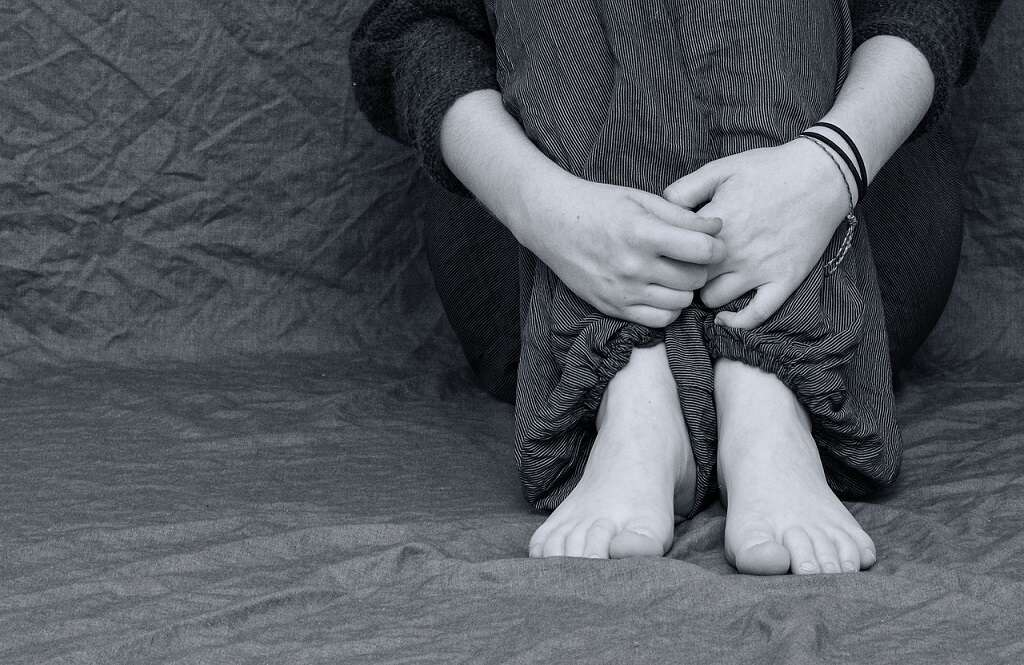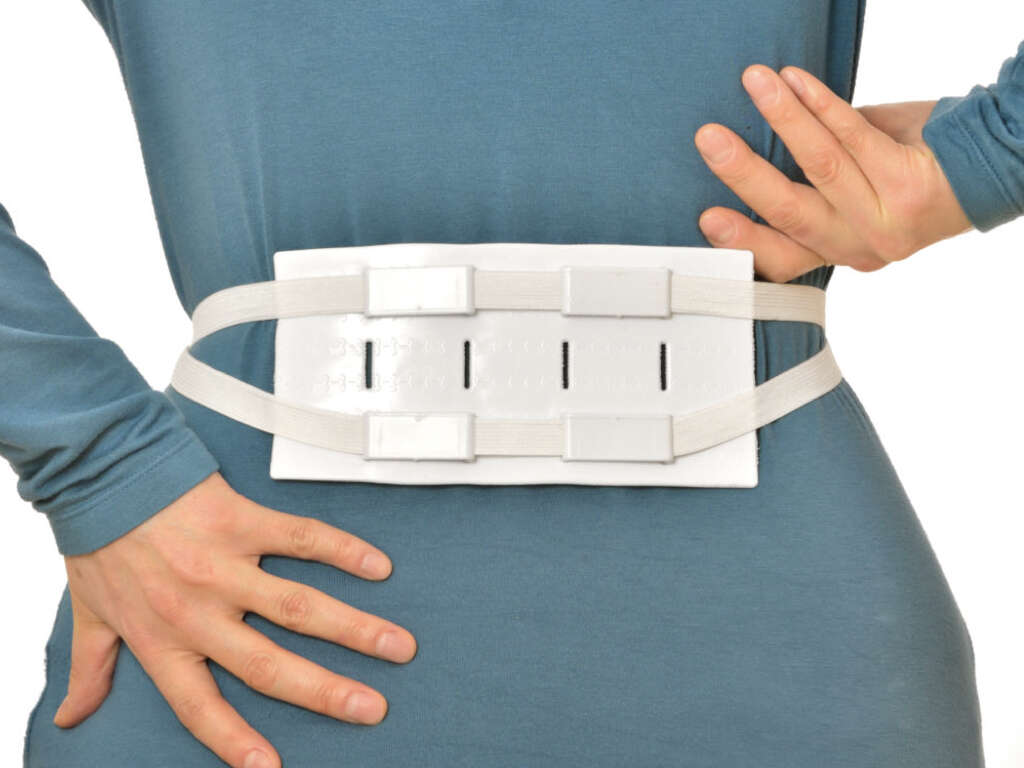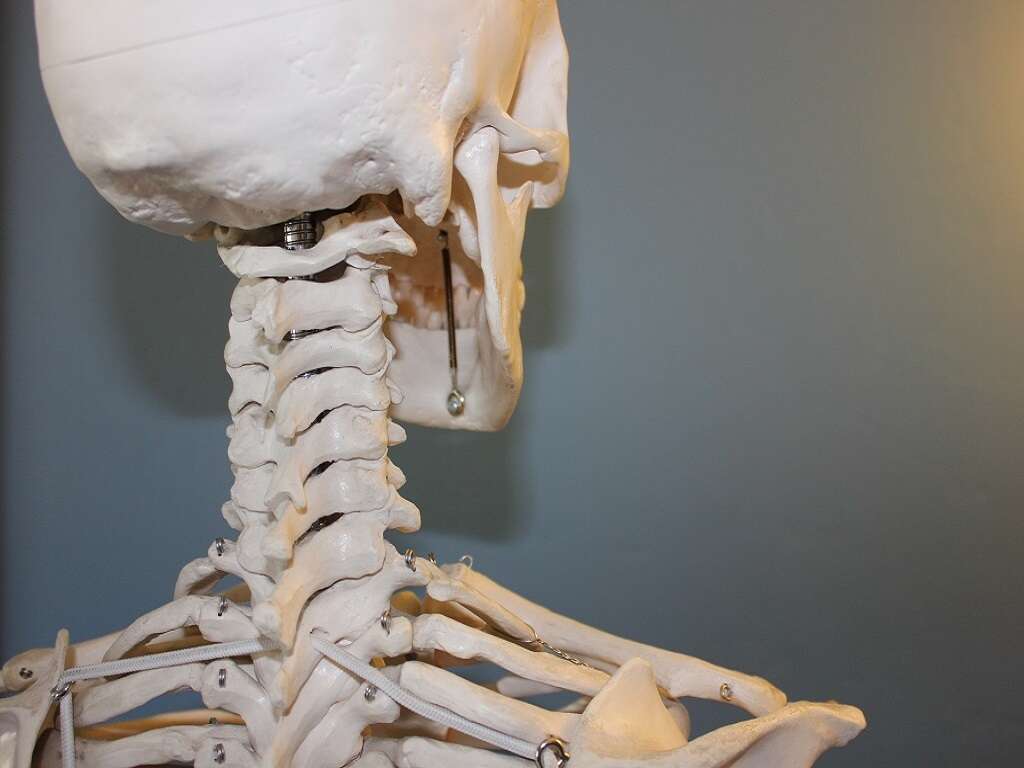10 Myelopathy Symptoms
 Article Sources
Article Sources
- 1. 'Myelopathy.' John Hopkins Medicine, www.hopkinsmedicine.org/health/conditions-and-diseases/myelopathy
- 2. 'Myelopathy | Pain Management.' Intermountainhealthcare.org, intermountainhealthcare.org/services/pain-management/conditions/back-and-spine-pain/myelopathy/
- 3. Patel, Nilesh M. 'Cervical Spondylotic Myelopathy (Spinal Cord Compression).' American Academy of Orthopaedic Surgeons, orthoinfo.aaos.org/en/diseases--conditions/cervical-spondylotic-myelopathy-spinal-cord-compression/
- 4. McCartney, Sarah, et al. 'Cervical radiculopathy and cervical myelopathy: diagnosis and management in primary care.' British Journal of General Practice, vol. 68, no. 666, Jan. 2018, pp. 44-46
- 5. EBARA, SOHEI, et al. 'Myelopathy Hand Characterized by Muscle Wasting.' Spine, vol. 13, no. 7, 1988, pp. 785-791, doi:10.1097/00007632-198807000-00013
- 6. 'Myelopathy.' Cedars-Sinai, 9 2020, www.cedars-sinai.org/health-library/diseases-and-conditions/m/myelopathy.html
- 7. Menon, Nitin, et al. 'Prevalence of depression, fatigue, and sleep disturbances in patients with myelopathy: Their relation with functional and neurological recovery.' The Journal of Spinal Cord Medicine, vol. 39, no. 6, Nov. 2016, pp. 620-626
- 8. He, Shisheng, et al. 'Improvement of Sexual Function in Male Patients Treated Surgically for Cervical Spondylotic Myelopathy.' Spine, vol. 31, no. 1, 2006, pp. 33-36
- 9. 'Neurogenic Bowel.' Baylor College of Medicine, www.bcm.edu/research/labs-and-centers/research-centers/center-for-research-on-women-with-disabilities/a-to-z-directory/bowel-health/neurogenic-bowel
Myelopathy is a condition caused by compression of or damage to the nerves of the spinal cord. There are various ways the spinal cord can be damaged, including injury, congenital or degenerative disease, a herniated disc and various autoimmune or neurological conditions.
There are several types of myelopathy, which are named according to the part of the spine that is affected. Cervical myelopathy is in the neck, thoracic myelopathy is in the mid-part of the spine and lumbar myelopathy is in the lower spine. Myelopathy symptoms vary depending on the area that's affected.1‘Myelopathy.’ John Hopkins Medicine, www.hopkinsmedicine.org/health/conditions-and-diseases/myelopathy
Pain
Pain is a common symptom of myelopathy. Pain or discomfort typically occurs at or below the area that is compressed or constricted, and it may worsen over time. Common painful areas include the neck, back, arms and legs. People may experience a sharp shooting sensation of pain down their back or limbs.
Myelopathy cannot be permanently healed in some cases, though there are several treatments that may help to manage the pain. Treatments vary depending on the exact location of the spinal cord damage and the underlying condition but may include oral pain relief medication, surgery, braces, spinal injections and physical therapy.2‘Myelopathy | Pain Management.’ Intermountainhealthcare.org, intermountainhealthcare.org/services/pain-management/conditions/back-and-spine-pain/myelopathy/

Numbness
Those with myelopathy may experience numbness, or reduced sensation, in various parts of the body. Numbness may occur, for example, in the arms, legs, hands, feet, fingers or toes. Altered sensations occur because nerve impulses cannot travel through the spinal cord in the normal way when it is damaged.
If myelopathy is untreated, numbness may worsen and spread to other areas. Lack of feelings can lead to a range of issues, including clumsiness, injury and frustration.3Patel, Nilesh M. ‘Cervical Spondylotic Myelopathy (Spinal Cord Compression).’ American Academy of Orthopaedic Surgeons, orthoinfo.aaos.org/en/diseases–conditions/cervical-spondylotic-myelopathy-spinal-cord-compression/

Tingling Sensations
Myelopathy can disrupt sensory signals, causing people to experience abnormal sensations. Tingling sensations, sometimes referred to as pins and needles, can be a symptom of myelopathy. These atypical feelings may be felt almost anywhere around the body.
Known medically as paraesthesia, tingling sensations can come and go and vary in intensity. Some people may experience feelings of prickling, burning, or pulses described as jolts or electric shocks. The sensations are typically painless, though they can be uncomfortable and irritating.

Weakness
Myelopathy can cause weakness due to disrupted motor signals. The signals are unable to pass through the spinal cord in the normal manner. When weakness presents as a symptom of myelopathy, it usually gets worse gradually.
People may feel weakness in various parts of the body, and the affected sites typically depend on what part of the spinal cord is damaged. Cervical myelopathy can cause weakness in the neck, arms, shoulders and legs, and thoracic myelopathy may result in legs feeling weaker than normal.

Loss of Balance
There is typically no dizziness, or vertigo, when imbalance is caused by myelopathy. Rather, a person may feel clear-headed but feel like the body cannot do what the brain tells it to do. Doctors may use Romberg's Test to check balance.
Imbalance can make walking difficult and affect the gait, sometimes causing people to stumble or fall. It might feel like the legs are too heavy. As well as being frustrating, this myelopathy symptom could lead to further injuries.4McCartney, Sarah, et al. ‘Cervical radiculopathy and cervical myelopathy: diagnosis and management in primary care.’ British Journal of General Practice, vol. 68, no. 666, Jan. 2018, pp. 44-46

Limited Movement or Coordination
People with myelopathy can experience reduced movement or coordination. These commonly become more limited as myelopathy progresses. Reduced movement can lead to muscles wasting, or muscle atrophy. It may be possible to reverse muscle wasting with treatment.
Reduced movement or coordination can affect fine motor skills, such as writing, typing, eating and fastening buttons. They may affect gross motor skills, including walking, lifting and climbing stairs. Individuals with cervical myelopathy might have reduced ability to turn the neck.5EBARA, SOHEI, et al. ‘Myelopathy Hand Characterized by Muscle Wasting.’ Spine, vol. 13, no. 7, 1988, pp. 785-791, doi:10.1097/00007632-198807000-00013

Abnormal Reflexes
Reflexes are the involuntary responses of the body to stimuli. Unusual reflexes could be signs of myelopathy. Examples of abnormal reflexes include where expected automatic responses are absent, exaggerated, altered or increased.
Doctors use various tests to check reflexes. Myelopathy may be indicated by heightened reflexes in the tendons of the knee or ankle. The big toe may point upwards in response to the bottom of the foot being scratched. The thumb and index finger might bend in response to flicking the middle finger.6‘Myelopathy.’ Cedars-Sinai, 9 2020, www.cedars-sinai.org/health-library/diseases-and-conditions/m/myelopathy.html

Fatigue
Fatigue is an overall feeling of continual tiredness or weakness. It can be mental, physical or both. Research suggests that a greater percentage of individuals with myelopathy have fatigue as compared with the general population. Studies indicate that myelopathy may be connected with sleep disturbances and increased daytime sleepiness.
Fatigue may be a cause of general weakness or alongside weakness as a separate myelopathy symptom. Fatigue can impact daily activities, cause distress and be unpleasant. It commonly improves alongside treatment for myelopathy.7Menon, Nitin, et al. ‘Prevalence of depression, fatigue, and sleep disturbances in patients with myelopathy: Their relation with functional and neurological recovery.’ The Journal of Spinal Cord Medicine, vol. 39, no. 6, Nov. 2016, pp. 620-626

Sexual Dysfunction and Libido Loss
Sexual dysfunction and loss of libido, or a lowered sex drive, can be myelopathy symptoms for both men and women. Associated symptoms, such as weakness, loss of coordination and fatigue may be a cause of libido loss.
Damage to the spinal cord can lead to symptoms like numbness, tingling, weakness and altered sexual function. Men may experience erectile dysfunction because of myelopathy, though this can be due to either physical or psychological issues.8He, Shisheng, et al. ‘Improvement of Sexual Function in Male Patients Treated Surgically for Cervical Spondylotic Myelopathy.’ Spine, vol. 31, no. 1, 2006, pp. 33-36

Incontinence
Incontinence, either urinary or fecal, can be a symptom of myelopathy. This means that a person may lose control of their bodily functions and pee or poop involuntarily. Incidents can be particularly distressing and may cause emotional, social, interpersonal and sexual disruption.
Incontinence typically occurs in more advanced cases of myelopathy. People may also experience constipation. The cause, with myelopathy, is neurological. Nerve signals are not able to flow correctly through the spinal cord between various parts of the body and the brain.9‘Neurogenic Bowel.’ Baylor College of Medicine, www.bcm.edu/research/labs-and-centers/research-centers/center-for-research-on-women-with-disabilities/a-to-z-directory/bowel-health/neurogenic-bowel










